Description
The Lightspeed Delta Zulu® is built for your mission. Our newest headset could save the lives of both pilots and passengers. It includes Lightspeed’s best ANR to date, with the superior comfort and durability you expect, while also introducing groundbreaking new technologies.
LIFE SAVING – LIFE CHANGING
Kanari® smart alert technology built right into the headset delivers audible warnings to you by measuring cabin carbon monoxide levels, helping to keep you and your passengers alert and safe. A built-in audio equalization system called HearingEQity® ensures crystal clear flight communication with your individual hearing profile created through an automated 12-frequency hearing test.
PERSONALIZATION
The Lightspeed App also allows you to check the CO sensor data, create your own hearing profile, record radio conversations, playback transmissions, and archive flight recordings for post-flight briefing and training. The Lightspeed Delta Zulu is also the first headset to adopt the UAC plug, allowing you to connect to other devices directly from the headset for charging, data communications, and auxiliary audio.

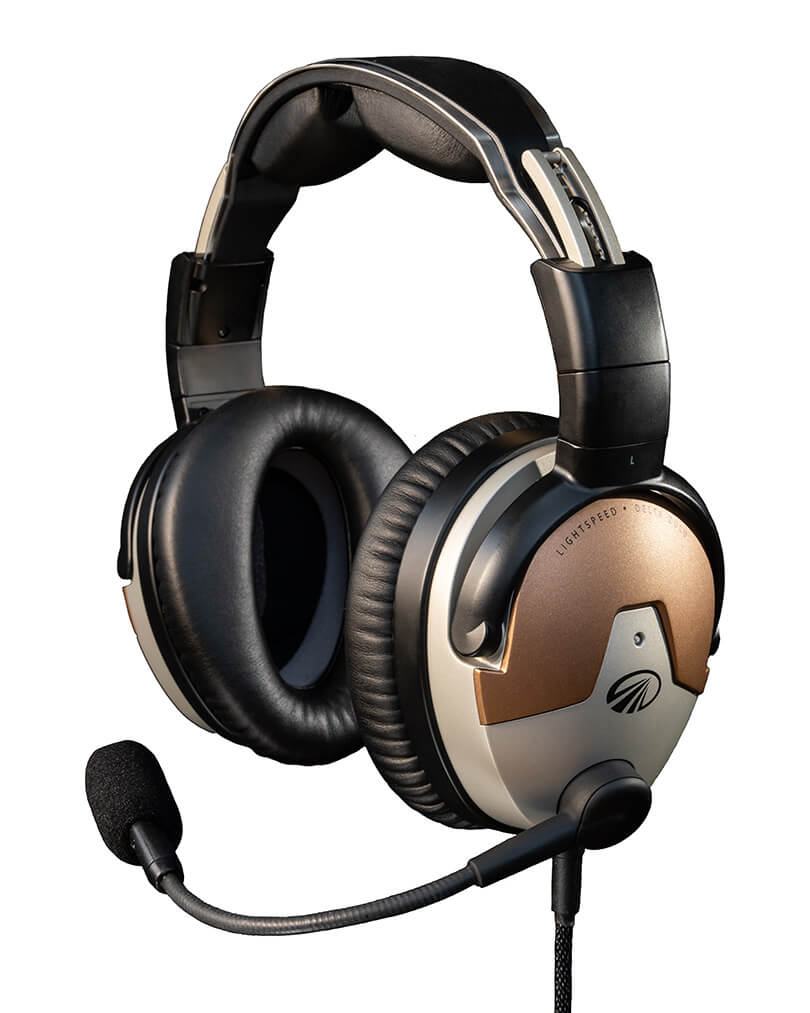
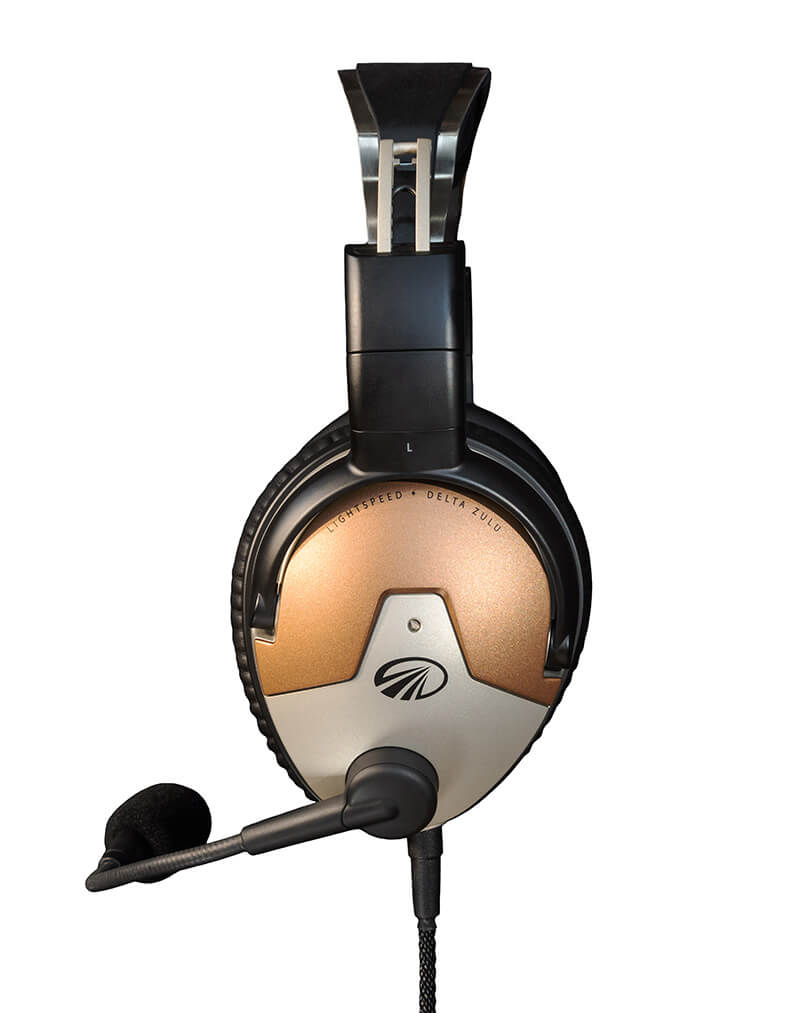
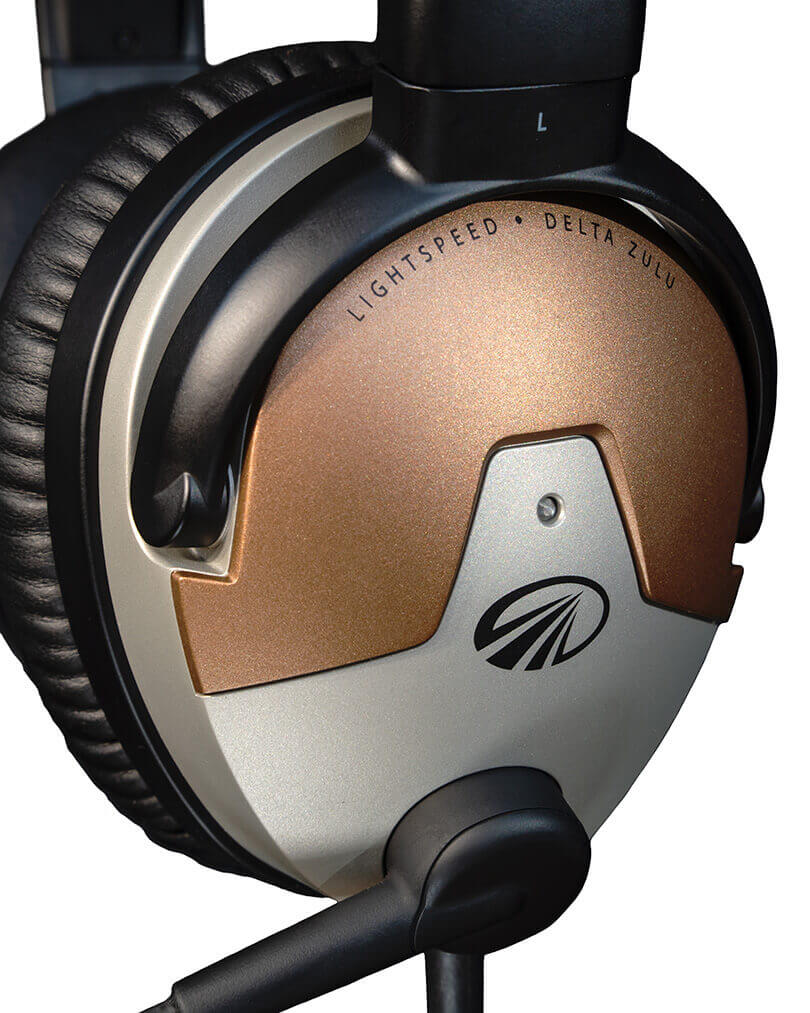
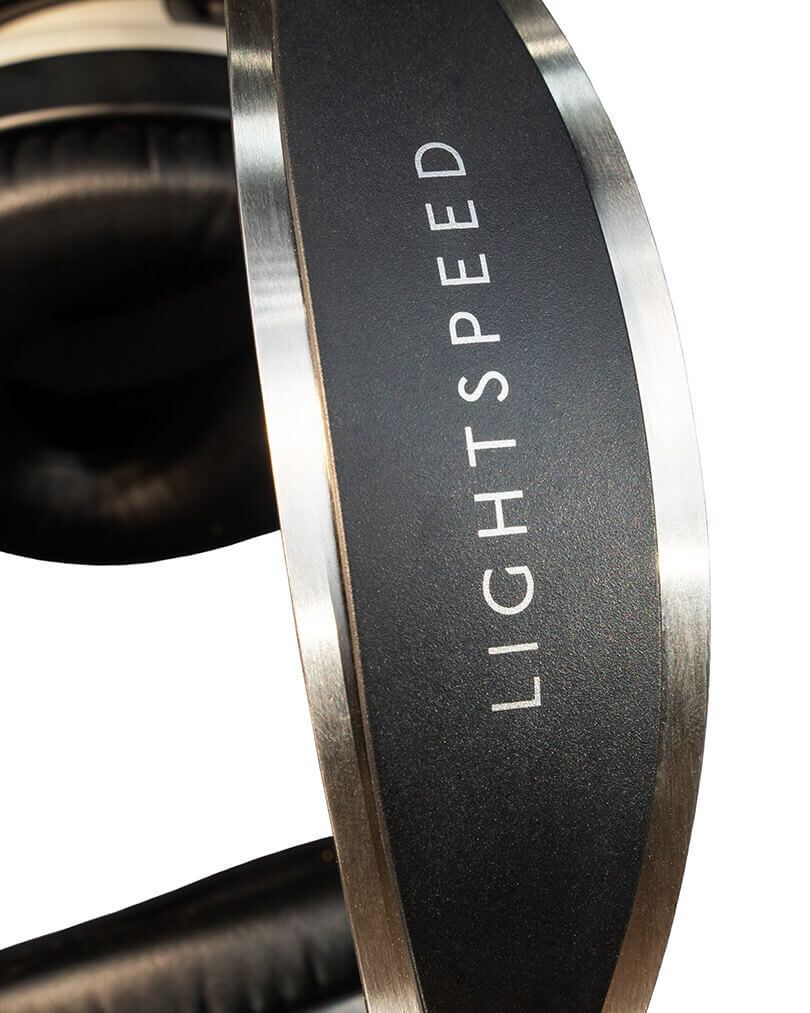
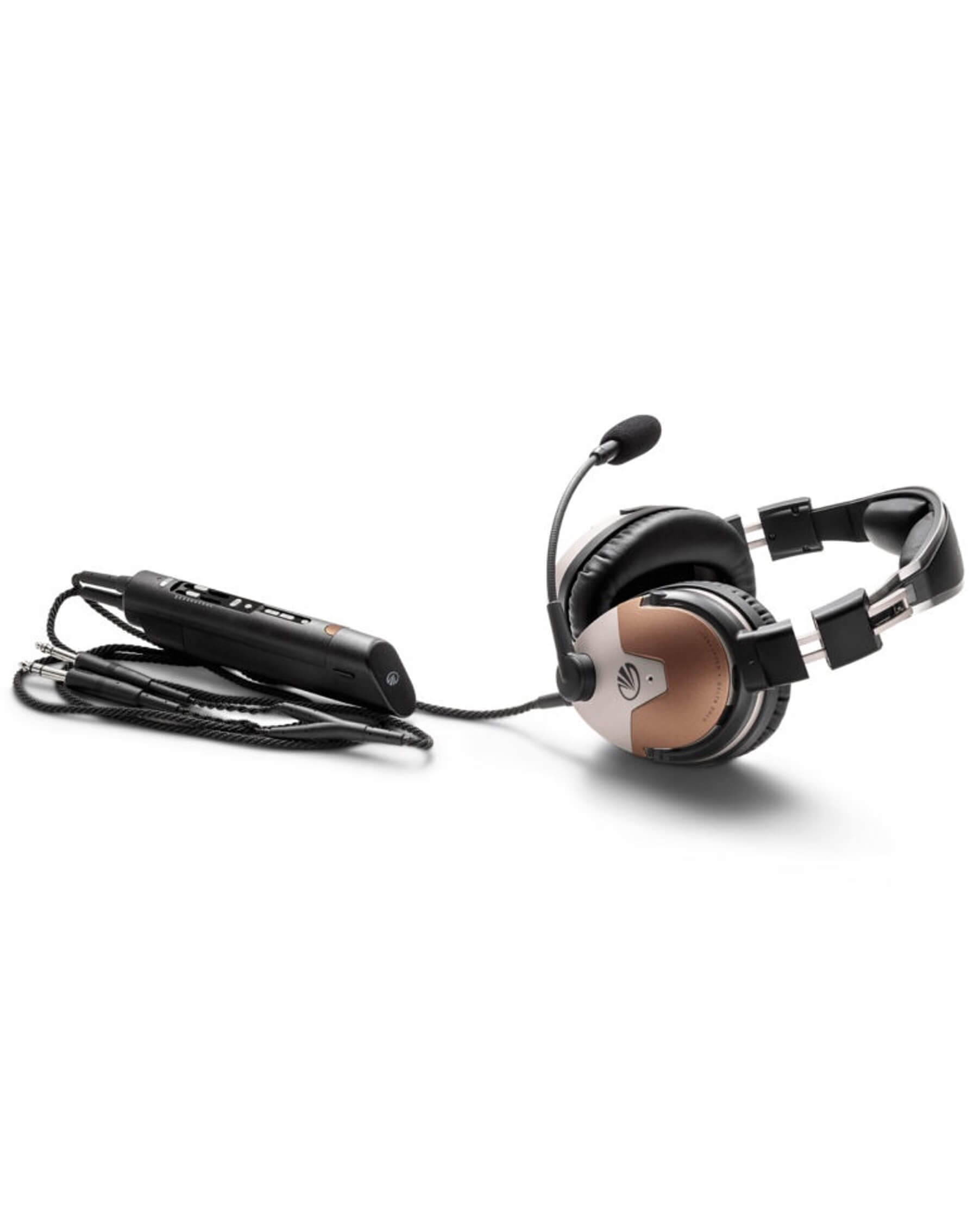
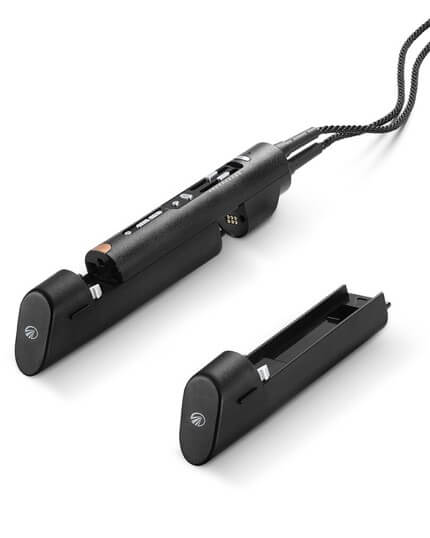
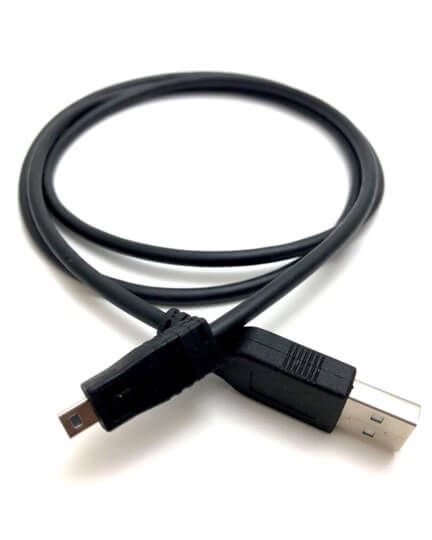
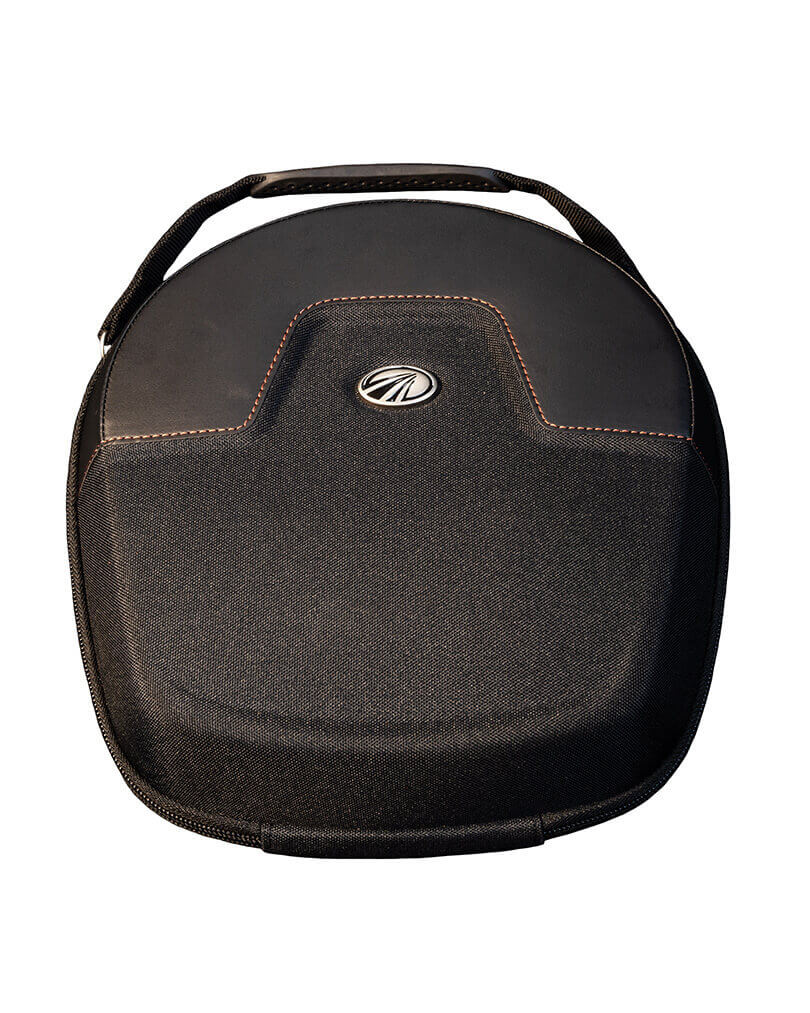

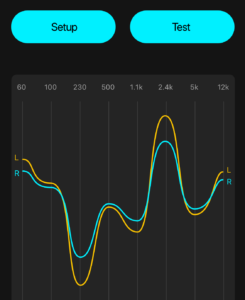
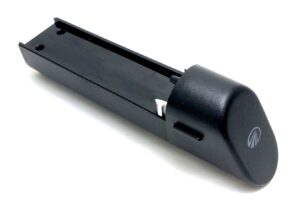
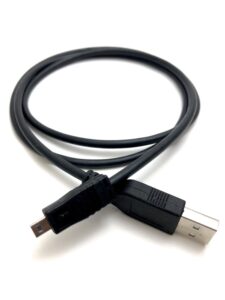
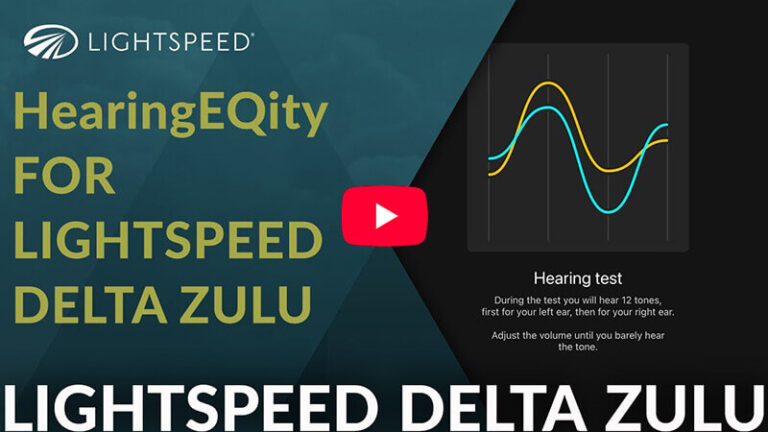


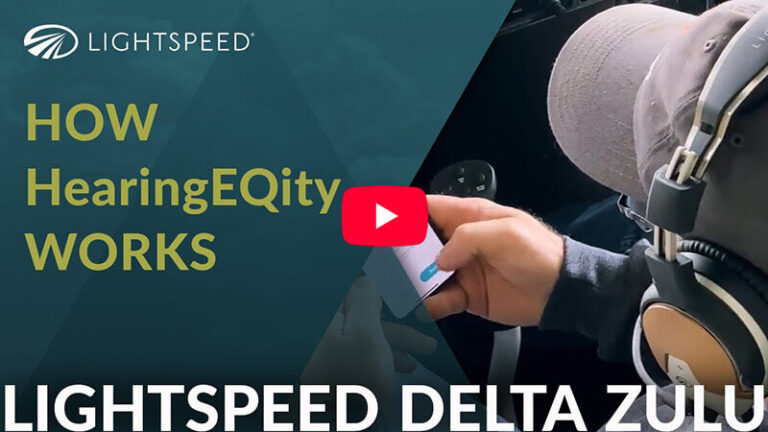
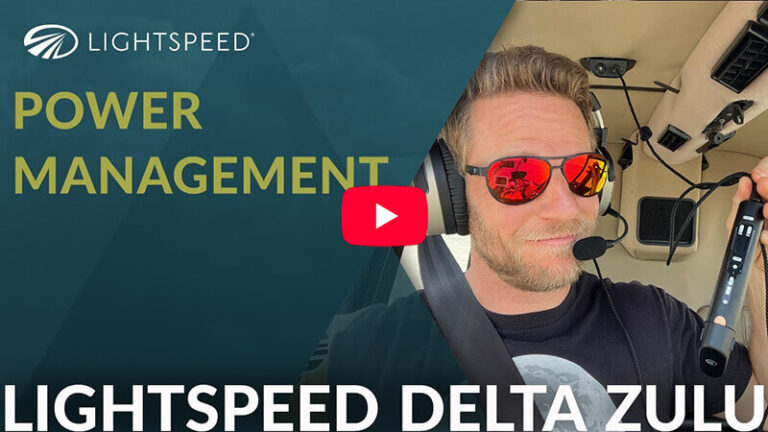
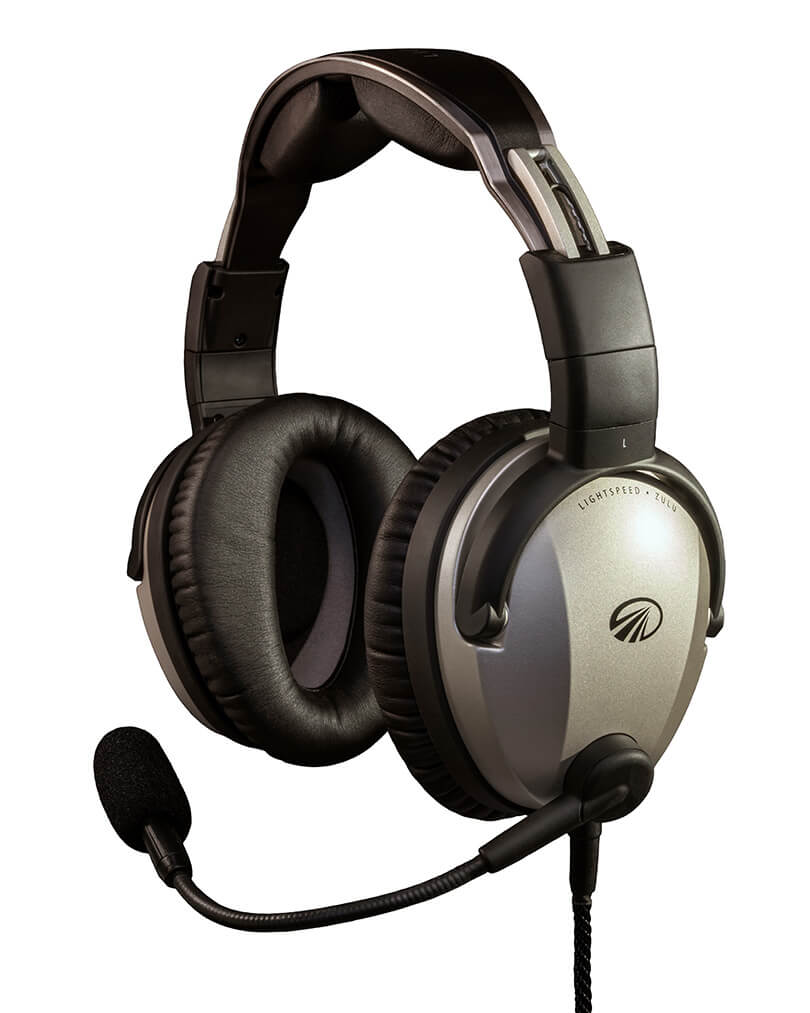
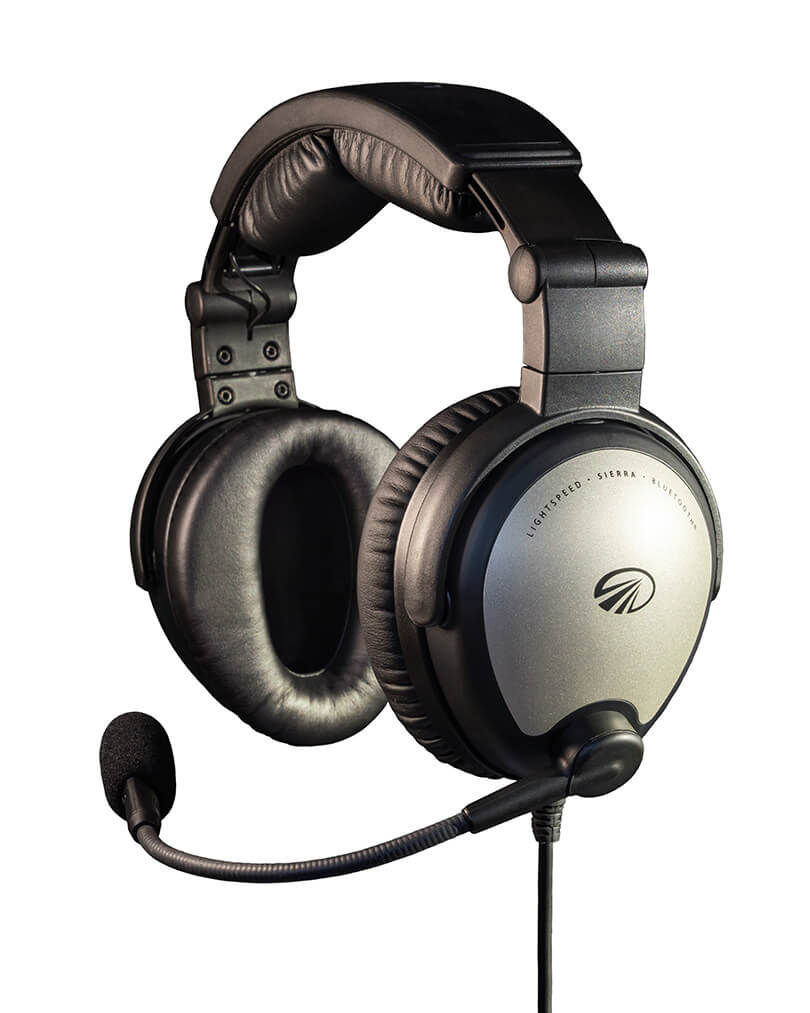
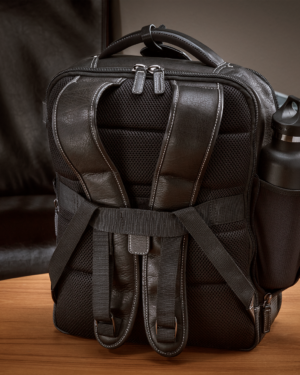
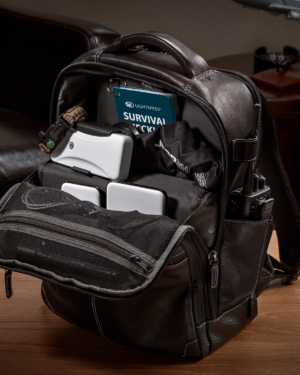
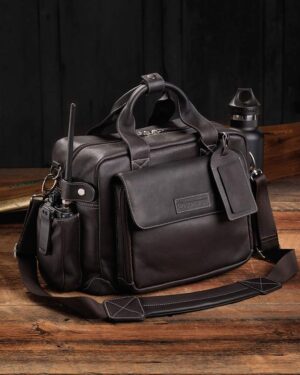
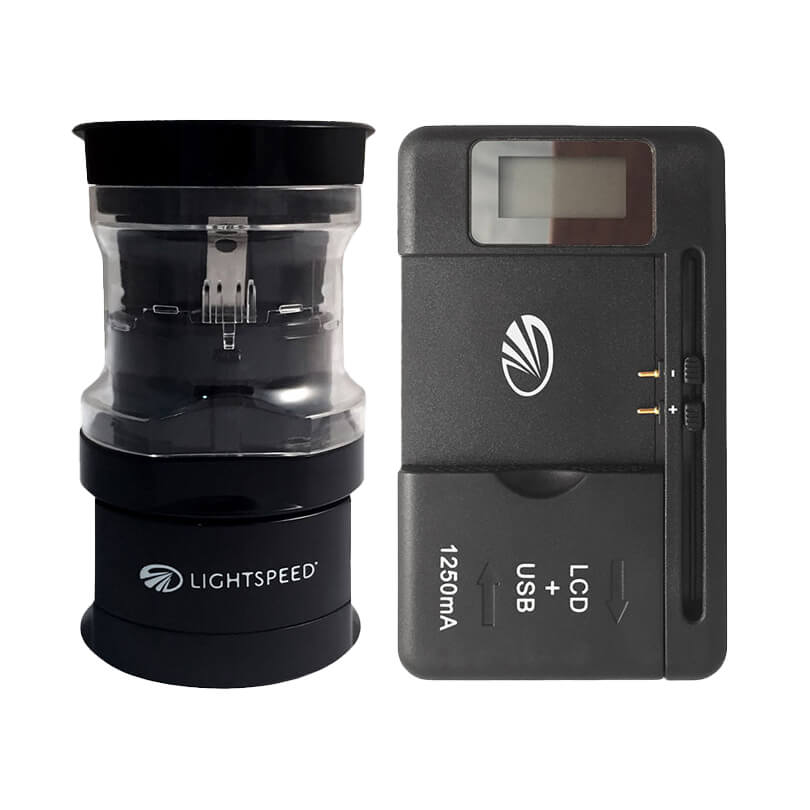
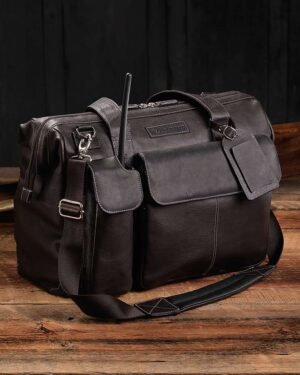
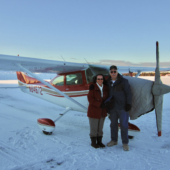






lesabend –
Began training in the days of no headset usage. Transitioned to the traditional David Clark’s with the bear trap squeeze that substituted for ANR. Once employed by my airline, I reveled in the ability to hear in a cockpit that only required one molded earpiece attached to a boom mic. I swore off over-the-ear-headsets forever. Re-engaging with GA, the Clarity Aloft passive headset was my go-to solution- no headband was involved. Realized that no matter how much massaging to the ear pieces I performed, extraneous noise still permeated reception. Once re-sold on over-the-ear headsets, I tried everything, inclusive of Bose, which always pinched the top of my head. Flew with a borrowed Lightspeed Zulu and was amazed at the comfort even with eyeglasses. Have been a user ever since. Bought the Delta-Zulu recently because of the EQity technology , the CO2 monitoring, and the other innovative technology. The headset is superior in comfort and hearing quality, notwithstanding the other features. Lightspeed’s customer support is top notch- professional, knowledgeable, friendly, and accommodating. Glad I spent the extra money above the price of a new Zulu 3.
Steven Clark (verified owner) –
I’ve been flying with Lightspeed Delta Zulu for over a year. The LDZ is the most comfortable headset that I’ve ever used. I’ve used the Bluetooth link a few times for phone calls; no issues whatsoever with audio quality. I have a CO monitor in my plane, but I’ve only heard one alarm (and that was in an unusual situation) in several years of flying with it. I have wondered if it was working properly. Now, I routinely check my CO levels with LDZ. It, too, reports 0. The ANR seems to work very well filtering outside noise, but I can still hear the stall horn acceptably (it has an annunciator that isn’t wired through my audio system.) The audio quality is excellent and the fine tuning of the audio output to your hearing situation seems to work very well. On one flight last we were being worked by a very rapid fire ATC controller. My wife, who uses a Zulu 3, commented after a couple transmissions, “How can you make out what he’s saying? It just sounds like garble to me.”
Brian S. –
i love my headset. Comfy(for my large head), clear, and rechargeable. The carbon monoxide detector is also nice for when I jump into the new bug-smasher of the day.
My only problem is: Why didn’t they make the charging port USB-C? It was a quiet issue until the new battery charger is in fact, Type-C. So now I need two cords to charge my headset and same-brand peripherals.
Hanna Golliher –
Hi Brian, we dive a little more into why we decided to use the UAC port on the Lightspeed Delta Zulu in this article here: https://www.lightspeedaviation.com/blog-posts/why-did-lightspeed-choose-the-uac/
Brian Turrisi (verified owner) –
The choice of a headset is very personal based on comfort and certain preferences. I have been wearing ANR headsets for over 25 years and I have found Lightspeeed to be my #1 choice. As a result I have owned 5-6 of them and lately purchased a Lightspeed Delta Zulu version. This is by far the best headset Lightspeed has ever made. Compared to the Zulu 3, it has built in hearing enhancement and a CO monitor. In addition the power source is now a lithium rechargeable battery as well as a standard ++A battery backup . This makes running out of power a non-event. Additional cables can be connected as well for outside audio sources. All this for a price that is comparable to the previous models but still a better price than a Bose.
This headset has all that anyone would want in an ANR device. It is just a matter of your individual comfort level to decide if this is the best one for you. But it comes with a 30 day return if you are not satisfied so there is no reason to not just try it!
David Butler (verified owner) –
I purchased a Lightspeed Delta Zula Headset for my wife as a gift. i tried it and it was not long before I purchased a set for myself. Great safety features CO detection/notification, great comfort, fully blue tooth, rechargeable battery, and personally, with my hearing loss the app allows hearing loss correction specific for my deficits. That is a lot of features in one headset. I had to clarify something with Lightspeed Customer Service and that individual was super helpful.
emregorkem (verified owner) –
As a First Officer on the Beechcraft 1900, finding the perfect aviation headset isn’t just a matter of luxury – it’s a necessity for efficient communication, focus, and comfort during those long flights. The Lightspeed Delta Zulu has emerged as a remarkable contender in this domain, and this review will dive into why it has become an invaluable companion in the cockpit.
One of the standout features of this headset is its remarkable battery life. With an astounding 30 hours of usable battery life, it’s like the Lightspeed Delta Zulu runs on its own time zone. This extended battery performance not only eliminates the need to carry spare batteries but also saves both money and the environment. Bid farewell to constantly purchasing and disposing of 4A batteries – this headset pays for itself over time.
The noise-canceling feature of the Lightspeed Delta Zulu is nothing short of magic. The moment you activate it, the cockpit becomes a haven of tranquility. Engine roars and ambient clatter are all but silenced, allowing you to focus on the communication that truly matters. In jest, I swear I could hear my captain’s thoughts – perhaps the headset has a hidden telepathic mode.
The Lightspeed app integration is the icing on the cake. This application grants you the power to fine-tune your auditory experience to perfection. Customization options ensure that the headset adapts to your unique preferences, resulting in an even more immersive flying experience. It’s as if the Lightspeed Delta Zulu understands that each pilot is a maestro with their own symphony of sound.
However, every rose has its thorn, and the Lightspeed Delta Zulu isn’t without its minor flaw. The absence of an indicator when you plug in the USB-C cable for charging is a missed opportunity for user convenience. A simple LED light could have provided reassurance that your headset is juicing up for the next adventure.
Being a First Officer isn’t just a job; it’s a responsibility that requires top-tier equipment. The Lightspeed Delta Zulu aviation headset understands this sentiment. Its impressive battery life, robust build, noise-canceling prowess, and customizable experience come together to create a tool that complements your role.
In the grand orchestra of aviation headsets, the Lightspeed Delta Zulu takes the spotlight with its impressive battery life, steadfast construction, noise-canceling prowess, and app integration. Its capability to grant you an oasis of calm amidst the roaring engines is priceless. The days of battery swaps and the environmental guilt associated with disposable batteries are over – this headset has a profound impact on both your flying experience and the planet.
Jakub Vozenilek (verified owner) –
Today this headset probably saved myself and another pilots life’s. As we neared completion of our run up my Lightspeed Delta Zulus gave me a warning for carbon monoxide levels. We checked the app and noticed levels rising quickly. Opening the canopy we saw an instant slow decrease. Tested with air vents and canopy open it immediately started to rise. Air vents closed still rising. We hit a peak of 215ppm! After owning this headset for 10 months all I can say are good things. The audio is clear, ANR is great, battery pack life lasts forever, nice app, live carbon monoxide detection, great price and a comfy fit.
Highly recommended this headset.
Robert Vorwald (verified owner) –
I recently purchased my Lightspeed Delta Zulu headset. This is my first ANR headset. I have been using inexpensive passive headsets for the past years. I actually started flying back in the 70’s when nobody I knew even used a headset. After a few recent flights with some of my club members that did have various ANR headsets, they convinced me to investigate ANR headsets. After going through many reviews and debating the cost I decided that if I was going to purchase an ANR headset I would purchase a top end headset. Personally I am a fan of CO monitoring and have been wearing a portable CO detector for years when using cabin heat. I thought this was a natural combination having CO and headset integrated together. On my first flight with the Lightspeed Delta Zulu I was amazed at the how easy it was to hear and understand communications and how well it filters out the C172 noise. I found the headset to be quite comfortable on my first flight 2 hour cross country. Looking forward to more flights with my Lightspeed Delta Zulu.
jwdonal (verified owner) –
Stunningly beautiful and functional headset. Fantastic feature set and shockingly clear audio. Lightspeed does it again. The Lightspeed Delta Zulu is now king of the mountain in GA headsets. Worth every single penny.
Jim –
Love this headset, audio is very clear and the CO monitor is a very welcome addition, esp when flying older GA airplanes. I tried a couple of other headsets and these are the ones that were most comfortable for me. My only complaint is the charging cord using some proprietary adapter. I almost didn’t buy this headset due to that fact. A standard USB-C to USB-C would be a lot more pilot friendly for a multitude of reasons.
Warren Bair (verified owner) –
(June 2023)
Lightspeed Delta Zulu and Bose A30 vs My Zulu-3; from an owner of LS 25xl, zulu-2, zulu-3
First, I have flown LS headsets for decades and the Zulu series since 2014/2015. Secondly, I have been flying Military, civilian and commercial since the early 1990’s. I fly turbine helicopters and GA airplanes, regularly and professionally.
Second, Obviously ALL heads are shaped differently. Your experiences WILL vary. So, use this review for knowledge, not defamation nor upon which to base your final decision.
Third, if you wear glasses of any kind with your headset, consider sliding the arms above the ear cups not between your head and the cup seals. I have found thin wire arms, like the RayBan wire wraps, work well with both headsets. Flat PVC arms like the close-fitting Willy-X work OK with the Zulu series but always breaks the seal on both Bose A20 and A30. They ALL hate the wide fitting sport glasses that bend away from your head, like Oakley’s.
Spoiler alert for those who wish not to read the critic that follow; I returned both headsets and stayed with my 10-year old Zulu-3 (LS’s Zulu-2 conversion program). Note, All ANC headsets require a good seal against your face/head; therefore, eating or chewing while wearing your headset will likely break the seal and you will hear a popping noise with every bite. For me, Neither the Bose A30 nor the Lightspeed Delta Zulu were $1000-1200 better than my Zulu-3’s. If you’re budget minded and want a good ANC headset? If you prefer an around the ear headset, get a remanufactured Zulu-3 or new Sierra. If you have small ears or prefer a sit-on-the-ear headset, a used A-20 is a great choice and the 6-pin LEMO plug lets you choose LEMO, dual GA or Helo U-174 by just adding cords to the same headset. Hint, Hint to Lightspeed!!!!! I found only one difference between the A20 and A30 from Bose; the A30 seems to have slightly larger ear cups. I’m not positive, but this can be confirmed by checking if the ear seals are interchangeable. Otherwise, the A20 vs A30 are markedly indifferent to the end user.
Notes on the LightSpeed Delta Zulu:
PROs:
1) My History with Lightspeed. Also, Generally the best Customer Support I have delt with in Aviation accessories.
2) Hearing Test adjustments: As an older pilot (57), this was very interesting and turned out to be very effective at enhancing voices over ICS and Radio. Probably my favorite upgrade to the Zulu series.
3) CO2 Alarm: Great Idea for those of us flying rentals. According to some reviews, this system is more reliable than the sticker indicators found in all the rentals I have flown. How about your experience? Personally, I never had this trigger while I had the headset.
4) 7-year Warranty, best in the industry.
5) 30% off all “accessories” for 5-years. The key is, items MUST be listed as “accessories” on the lightspeed website (Cords, Ear Pads, etc.), so don’t think you’ll get 30% off one of their nice leather flight bags (Hint: NOT an accessory).
6) If you have a previous LightSpeed headset, their trade-up program will discount the cost by sending them your older headset in trade.
CONs:
1) There is a lower side tone with ICS; it sounds somewhat muted while radios sound “normal”. This may be by design to heighten radio calls similar to how comm-priority works.
2) Battery recharge REQUIRES the entire headset be plugged in for charging, -IF- using only the LI battery pack. That said, after fully charging the LI battery pack, I flew 17-hours with no issues. Although, I always have a backup set of AA-batteries ready. My Zulu-3’s gets about 30-hours on a set of AA’s (without using BT).
3) It takes 8-hours to fully charge the LI battery pack. So, plan to charge while you sleep. The only way to track or know your battery power level is via the LS phone App. The headset only shows Green or Red. According to LS, when flashing red begins you should have about 4-hours of power remaining.
4) For me, the critical and deciding factor was the fit against my head/jaw and the subsequent “popping” as the seal breaks and the ANC tries to cancel the new peak sound and remap accordingly. First, ALL ANC headsets require a solid, unbroken and clean seal around your ears. Secondly, ALL ANC headsets need to fit as high as possible under your ear to minimize the effect of the soft area between you jaw bone and neck muscles. Lightspeed tries to help this fit with higher crown pads and three areas of the headset that can be flexed to help increase compress against your head to improve the seal. That said, plus it looks like the headset frame is identical to the rest the Zulu series, I just could not get a consistent seal and every time I looked for traffic or cleared my area I was punished with “popping”. I found two ways to reduce the pain: 1) don’t move…impractical, 2) Add ear plugs…reduces ALL noises; also impractical because when you near the peak volumes, voice distortion was significant. Although, ear plugs did mitigate the popping to a comfortable level and it was much less noticeable.
Recommendations to Lightspeed:
1) I know some people during the beta testing did not like the audible battery level. But there should be some way for us to inquire, ask, or otherwise find out the battery status without being required to connect to your App during preflight or while in flight. A couple of quick ideas: 1) Able to program or select your “command” button to report battery level. I.e. 3-quick presses of the command button would activate the audible voice with remaining battery level; like “Battery 75%” or “battery critical, 10%”. You’ve already given us 2-3 options to select how we wish to use the command button; can this be added in a software upgrade? 2) If audible program is out, could a light flash code be used during initial startup (ibit?) sequence. Something like, When I turn the headset on the first thing I will see is battery status as follows, then your normal light codes while in use: 3-quick green flashed = 80% or more, 2-quick green=60%+, 2-quick amber=40%+, 2-quick red= 20%+, steady red=less than 20% and then will remain steady red.
2) Even with my Zulu-3’s I dream of the 15xl and 25xl ear seals. As an eyeglass wearer, the thicker seals, made a world of difference. I could wear all my glasses except the bowed-out sport glasses that don’t sit against your head. I already wear only very thin metal or very flat PVC framed glasses and regularly just slide them above the ear cups to get a good seal.
a. Lightspeed, is there something about the audio mapping that requires the thinner seals? Is it a sound vs space equation? Ear seal material limit (foam, gel, pleather, ???)?
Comparative Notes on the Bose A30:
PROs:
1) Probably the lightest full-headset. The only ones lighter are the ear plug or earbud versions like the Bose Proflight-2 and similar.
2) Definitely the softest squeezing headset.
3) Seems to have a wide range of volume with minimum distortion. I was able to still hear well while wearing ear plugs with the headset.
4) 5-year warranty
CONs:
1) Yep! Ear seals and the punishing penalty of “popping” every time I talked.
2) I called Bose to see if there was any way to increase the squeeze, so as to get a better ear seal….there is none. Bummer!
3) No marked improvement over the A20 nor the Zulu-3.
Well, here were my thought. Due to time constraints, I returned both. For my Zulu-2/3’s I ordered a pair of Oregon Aero ear cup liners to try. IF they are markedly better than the Lightspeed ear seals, I may try the Lightspeed Delta Zulu again because I really liked the ability to tune the sound frequencies to my specific hearing. Kudos to Lightspeed. But the failure to seal against my head was the deal breaker.
Daniel Gay (verified owner) –
After extensively using various headsets during my aviation journey, I have unequivocally discovered that Lightspeed Aviation Headsets surpass all others in terms of durability, comfort, and the delivery of pristine communication, free from the anxieties associated with audio or communication problems. The noise-canceling technology filters out external distractions, ensuring that transmissions remain clear and intelligible even in noisy cockpit environments.
The Lightspeed Delta Zulu boast an impressive level of durability, ensuring they withstand the rigors of flight, providing unparalleled performance and longevity. For me comfort is paramount when it comes to aviation headsets. The carefully engineered weight distribution ensures that wearing a Lightspeed headset feels effortless, preventing unnecessary fatigue and enhancing overall comfort.
In conclusion, my extensive experience with various headsets has led me to the unequivocal conclusion that Lightspeed Aviation Headsets are the epitome of excellence and on the forefront of headset innovation.
Owen DeLong (verified owner) –
I won’t repeat what everyone else has said beyond “Yes — I, too, love my LDZs (I have 2). it’s an awesome headset and a great upgrade from
my prior Lightspeed headsets (20K->20XL->Zulu->Zulu3).
The one thing I’d really appreciate is an external charger for the LiIon battery packs so that they could be charged outside of the headsets. Ideally it would either be USB-C powered or come with both Cigarette and Wall power adapters. Fortunately, adding this accessory wouldn’t require any sort of redesign of any of the parts that exist, just the creation of an additional (relatively simple) part.
Brent Lambert (verified owner) –
So far, I love my new Lightspeed Delta Zulu headset. I traded in one of my Zulu 3 headsets (which I also loved), mostly for the CO monitor. However, after flying with the Lightspeed Delta Zulu, I think the best feature is the hearing EQ. The clarity over the radio is very noticeable. From a comfort and ANR perspective, I find the Lightspeed Delta Zulu to be on par with the Zulu 3.
mitch davis (verified owner) –
Best GA headset ever. The eq feature is friggin amazing. Take the time to set it up! Great value, updates easy, Lithium battery lasts long, traded an A20 and a Zulu in for 2 Lightspeed Delta Zulus w no regrets. The only thing Id like to see is make the cable lengths longer, coming from the molded Y section,for those who have separate audio jacks spaced apart on the dash. Other than that 4 star, fast shipping, app works good
Jeffrey Lavine (verified owner) –
I have owned Lightspeed headsets going back to the QFR. I also have a Sierra, and now the Lightspeed Delta Zulu. My hearing, which has sucked since my Air Force days working on the flight line, has gotten worse, even with hearing aids. The clarity in my left ear is below 50%, and the right ear is a bit better. I made the decision that if I couldn’t clearly hear ATC, my flying days were possibly ending. The purchase of the LDZ was the smartest move I could have made. I used the HearingEQity in the app to setup the headset to my hearing loss without hearing aids. It works! ATC, intercom, ForeFlight are all crystal clear. The LDZ is comfortable for long periods, but I can’t wear my hearing aids with it because the hearing whistle when enclosed in the ear cups. BTW, I am an audiophile and I was pleasantly surprised at how good music sounds through the Lightspeed Delta Zulu . So, an $1100 investment to keep me flying safely. Money well spent.
Steve Collins (verified owner) –
Well I bought 2 sets of Lightspeed Delta Zulus at sun in fun 1 set for my rv10 1 set for the s7 I’ve been using zulu3 in the rv10 for several years what got me interested was the hearing test etc. in the rv10 there is more of a crisp clear sound a improvement for sure in the s7 wow unbelievable deference. Only one flight so far in both aircraft, very happy so far .
Darrin Clark –
So I have had mine since they hit the market. I have had the CO detector alert three times now (Steep turns in my wake) so I am glad they work. Def worth the cost and comfort? Yes, yes and yes!! Def an upgrade from my older DC’s, which I will still keep and use lol.. But for sure love them and going to be buying another pair as well soon….
philmil99@hotmail.com –
Lightspeed Delta Zulus arrived Friday, set up Tue HearingEQity, and flew with them on Saturday. Night and day difference from previous PNR headset. CFI flies with the main competitor headset and we were both interested in seeing the differences. Lightspeed Delta Zulus are absolutely neck and neck with competition. Lightspeed Delta Zulus appeared to block more higher engine noise than the competition. The remainder of the sound curve was just as good if not better. We were able to try out all aspects of the headset, and both the CFI and I were impressed with the quality of sound as well as build. Bluetooth recording was excellent, connection with Foreflight was excellent and notifications came through loud and clear. CO2 sensor was tested as well with zero issues. While I have never owned the other brand, I have used them off and on and while they are not bad by any means, I’ll save a bit of money and lose none of the capability with the Lightspeed Delta Zulus. Plus, I get the added benefit of flying with a safety wearable. They really are the next step in aviation safety on the personal level. Lightspeed, you have one happy new customer for life!
Dwane (verified owner) –
Love this headset. I tried some of the less expensive ANR headset and there is no comparison. Just awesome. I can hear and understand all the call now. I was having trouble with a PNR headset. Now everything is great!
I would have given 5 stars, but they only have the app for IOS. I am an Android user and it would be great to have the APP on Android so I could record my cockpit.
Michael Zenner (verified owner) –
I am not an early adopter of any new product or technology, but with the Lightspeed Delta Zulu, there wasn’t a second thought. The added safety of the CO monitor is worth every penny. The ANR and hearingEQity are just a nice benefit. Thank you Lightspeed for this great innovation!
Eric S –
Quality meets design and safety! I’ve flown with 7 different headsets out in the market in the last five years! I’ve also been able to get feedback from every single one of my students on what matters most when it comes to headsets. The quality you get from the Lightspeed brand of headsets is superior to others!! Congratulations on an amazing product.
Shawn Falchetti –
As a student pilot rounding up on forty flight hours, I’d decided it was time to upgrade from my PNR David Clarks to an ANR headset. The decision point was between the Lightspeed Delta Zulus and Bose A20. The Zulus won out in features – in particular the built in carbon monoxide sensor and bluetooth cockpit voice recording. My reaction after my first flight was “wow – why did I wait so long?”. The headset is so comfortable that I forgot I was wearing it, and everyone’s voice was clear. I found the mic a bit quieter than my David Clarks, but the mic bias is adjustable, and I was happy after a few tweaks. It’s nice that the charging cable allows the headset to be connected to your computer’s audio so that you can hear how adjustments to the mic or equalizer sound at home. Connecting via bluetooth to my phone was easy and the headset automatically reconnected each time I turned it on. The Lightspeed app allowed me to record all cockpit audio via bluetooth and then download the tracks to my laptop, which I like doing for debriefs. Previously I’d needed a splitter for this, and it was nice decoupling my phone from the intercom. I’ll also mention that during my first flight with the Zulus I had a new instructor, and when he plopped on his headset I noticed it was also Lightspeed Delta Zulus. Like me, he’d recently upgraded from PNRs and chose the Zulus over the A20s due to the features. Lastly, I’ll add that during a two-hour cross-country I forgot to turn on the noise reduction and didn’t realize it until I was reviewing audio after the flight (having flown with PNRs I’m still getting used to enabling ANRs). I was pleasantly surprised that the PNR was quite good and I had no trouble hearing ATC, even with ANR off.
Amy Hills (verified owner) –
I am a full time CFI who has been using the Lightspeed headsets for 6 years: Sierra, Zulu 2/3, and now Lightspeed Delta Zulu.
The CO monitor in this headset was its top selling point for me as I am changing planes sometimes 3 or 4 times a day, from flight school planes to privately owned aircraft. It was important to me to be able to monitor a substance that I cannot see or smell before it became a danger. The added bonus of the charts on the app to show the historical levels of CO I have been exposed to over a day is a huge win as well. This feature paid off the very first day I owned the headset as the C150 I fly in regularly set off the CO monitor alert within a few minutes of takeoff. I was able to grab my phone, and see the exact numbers that myself and my student were being exposed to, and make direct changes to the way we were flying the plane to bring the numbers down. This was immediately reported for maintenance and the charts for the CO levels were used as direct evidence to help the mechanics to begin to chase down a difficult to find CO leak.
The sound quality of the Lightspeed Delta Zulu is absolutely outstanding and I am able to hear and communicate with this set exceptionally well. I can understand ATC while in busy airspace, loud airplane, and many other factors with no trouble at all. The set up of my customized hearing profile was easy to complete through the app and is a brilliant feature. While in a quiet environment at home, I played some music into my headset and was blown away by the incredible detail of the sounds I could hear – what a great experience to hear some of my favorite songs in a whole new way.
The audible alerts for bluetooth connected, CO levels, and low battery levels have been a bigger asset than I thought when I purchased it. The alerts bring me a level of comfort with no input from me, and when I briefly went back to a Zulu 3 for a flight, I missed those alerts and the mental comfort they bring knowing the exact status of my headset and the air quality around me.
I am also a big fan of the rechargeable battery and the option to swap to the AA pack if my lithium battery happens to die after several days of use. I love that I can charge it at home in the evenings and know that I won’t be using AA’s frequently for my regular flying. I do wish there was a way to charge my lithium battery without having to have it plugged into my headset as that is a bit of a hassle.
For fit, these fit very similarly to the Zulu 2/3, and for me that means using a tall headpad which I moved from my Zulu 3’s. I’ll be requesting one for my Lightspeed Delta Zulus as well, as this helps me avoid the ear cups sitting too low on my jaw line. Overall, I find my Lightspeed sets to be more comfortable than any of the other headsets I’ve used, borrowed, or owned.
I’m very happy with my Lightspeed Delta Zulus and have no regrets upgrading at all!
Maarten Smit –
I have been flying with the new Lightspeed Delta Zulu for a couple of weeks now in noisy single and twin engined prop aircraft. I switched to Lightspeed from Bose after I had the chance to try one out at the flying club. This can be a personal thing but the Zulu works so much better with my head shape. I find the clamping force and the pressure on the dome of my head to be greatly reduced with LDZ. The oversized ear pads are very comfortable too.
What I love about them (apart from the obvious CO monitor and the classy styling) is the control module that has the wires coming out of one end only, making it much easier to stick in a pocket or a door sleeve in the aircraft. Love the rechargeable quick snap in/out battery pack, taking the worry out of having to fiddle with replacing AA’s in flight.
I use the ATC recording feature and am very happy with that. Did away with all the adapters needed to splice the audio into a device from the audio panel. ATC recordings go directly on my iPhone/iPad and the quality is very good.
Having some hearing loss in my left ear from being around these noisy beasts over the years, the EQ feature really does make a noticeable difference. Pair that with the obvious build quality and the choice is easy. Highly recommend this headset if you’re on the fence.
Bert Light (verified owner) –
What a difference! I wear hearing aids, with diminished hearing in the left ear. I was excited to try the Lightspeed Delta Zulu headsets for the hearing equity feature. The headsets didn’t disappoint. I did the 12-frequency hearing test and the result was fantastic. The transmissions came out sounding equal from both sides as oppose to mainly from my right side with my Bose A20 headsets. The clarity of the transmissions was much sharper and clearer. The headsets were much more comfortable on my ears with my hearing aids. Everything else is a bonus, such as the CO monitor and charging options. These headsets are fantastic!
Richard Brong (verified owner) –
My first pair of Lightspeed Delta Zulus had an issue which LightSpeed took care of (good customer service!). The second pair arrived and I have been able to fly with them for at least four or five flights now. I am a flight instructor and have used many headsets over the years including LightSpeed Thirty 3G (my first headset with noise cancellation). The LDZ’s are in the top ranks, for sure. They are comfortable and I have worn them all day long – maybe just had a tad of ‘clamping fatigue’ after several hours but not too bad. The cord is great! I also love the built in CO detector. Sound quality is good. The ‘cockpit voice recorder’ in the app is actually quite useful as an instructor. I have had a little issue with a slight ‘fishbowl’ sound while noise cancellation is active but it is very minor and not overly distracting. Hopefully it can be worked out. Overall, I like the headset and am looking forward to using it. Worth the investment.
Jacob Pyzik –
I flew with my new Lightspeed Delta Zulu headset yesterday for the first time. I have the Bose A20 headset as well. The app, rechargeable battery pack, and built in CO monitor are what sets this apart. You can’t knock Bose for sound quality, These are just as good, and if anyone says different they are probably being paid by Bose. I wanted to have two quality headsets in the cabin, I’m a gadget guy and a hobby pilot for those reasons I will continue to use the Lightspeed and let my wife use the Bose.
dengcy (verified owner) –
Good product. But what is UAC? I do not understand what they were thinking. By looking at this port, I felt this headset was designed 20 years ago. Why not adapt to the latest USB-C? It is so stupid to let customers take additional cables.
Lightspeed Aviation –
The Universal Accessory Connector (UAC) 2-way direction cable provides a single access point for charging, data communications, and auxiliary audio. The pilot community has a wide variety of use models for the devices that they connect to the headset. The UAC connector meets program requirements from Apple that allowed us to provide usage across the range of device connections (USB-A, USB-C, Lightning, and 3.5mm analog). Also, if you compare the UAC plug and the USB-C plug, there is a significant physical footprint savings going with UAC. This physical saving allows us to provide a more streamlined control box design.
Robert Jauch (verified owner) –
I too was awed by the sound quality and noise cancelling of the Lightspeed Delta Zulu especially when compared to my old David Clark. The only gripe I have is that the cable to the controller is too short since I want to attach it to my left side wall pocket and my jacks are mounted between the front seats. At least offer an extension. The CO monitor is great feature and adds security to my flying. I have not used it long enough to test the battery life, but will use the non-rechargeable battery pack as a backup.
Lightspeed Aviation –
We are truly happy you are enjoying your new Lightspeed Delta Zulu. As indicated on the specifications tab above on this Lightspeed Delta Zulu store page, the Upper cable is 48 “, and the Lower cable is 21 1/8”. We do offer longer cables and suggest that you call our customer support team at 1-800-332-2421 before ordering. However, you can still reach out and we can talk to you personally to address your own situation.
Robert Kreiling (verified owner) –
Was finally able to take my new Lightspeed Delta Zulu out yesterday for a test flight, and I was blown away by the headset. I had been searching for a new headset for a while, and after using a Lightspeed Zulu 3 in my Uncle’s plane, I was immediately interested in the Lightspeed Delta Zulu upon it’s release. For starters, the comfort of the headset is fantastic. The fitment is exactly where I want it, and does not feel too heavy or bulky to be comfortable in a small cockpit. The sound quality and ANR is just as great. I truly had no idea just how loud the airplane I had been flying in was until I went up with the Lightspeed Delta Zulu. Talking with both ATC and passengers is crisp and clear, and does not seem to pick up ambient noise from the cockpit. Lastly, the biggest bragging point for me: the built in CO monitor. After flying patterns and a small cross country, I could go back into the app and visibly see where I was on the ground taxiing, and where I climbed out and the levels began to dissipate. Knowing that this headset could actually be what saves your life in a drastic situation should be enough to convince anyone to purchase. Bravo Lightspeed for the Lightspeed Delta Zulu!!
adrienmordret (verified owner) –
Great headset, love the lithium battery addition compared to the Zulu. Just one thing that drives me NUTS, this moronic UAC connector that nobody in the electronics industry was crazy enough to use, my headset will be the last and only device to have a proprietary (and seemingly very fragile) connector… what the hell is that lightspeed? Was USB-C too great in addition to beeing perfectly suited for the usecase (audio, power, and “some” data) ?
Lightspeed Aviation –
The Universal Accessory Connector (UAC) 2-way direction cable provides a single access point for charging, data communications, and auxiliary audio. The pilot community has a wide variety of use models for the devices that they connect to the headset. The UAC connector meets program requirements from Apple that allowed us to provide usage across the range of device connections (USB-A, USB-C, Lightning, and 3.5mm analog).
Art Friedman (verified owner) –
We already have multiple Zulu 3’s (as well as some other) headsets, but I decided to add a Lightspeed Delta Zulu.
Lightspeed has introduced a completely new app, connected via Bluetooth, for this headset. The existing one was called “FlightLink,” and the one for the Lightspeed Delta Zulu is simply called “Lightspeed.” Unfortunately, the app is iOS only, which would tick me off enough to use the 60-day money-back guarantee if I didn’t have an iPhone or iPad, since the HearingEQity is the feature that prompted me to buy a Lightspeed Delta Zulu. The app is required to set up the HearingEQity feature to create your individual audio profile (I have almost no high-freq hearing, I learned) and configure various alerts. During setup, it plays 12 tones for each ear and prompts you to adjust for each one. It took about 4 or 5 minutes. It will play music at the end, so you can hear the difference with and without the custom HearingEQity feature engaged. It was noticeable but not huge for me. The user’s profile is stored on his or her iPhone or iPad and activated when the headset and iOS device are paired. As with the previous app and headsets, you can record and playback your communication (and also your measured CO history) with the app. You can set the CO alert threshold in the app. I already have a dedicated CO monitor in our plane, but this one has the advantage of a warning I can’t ignore and is useful in planes we don’t own as well as a CO report after (or during) every flight. If I was a renter or CFI that frequently flew in other people’s airplanes, this portable monitor would be invaluable.
The Lightspeed Delta Zulu comes with both a rechargeable battery and an AA pack. My plan on long flights is to start with the rechargeable battery, then switch to the AA pack and replace the AAs as needed. Switching packs is very simple and quick, as is replacing AAs.
At the moment, the only use I can find for the USB-A-to-UAC cable (included) is to charge the rechargeable battery pack (while it’s installed in the headset), but Lightspeed may have plans for it. You can play music or other audio through it with automatic muting if you’d prefer that to Bluetooth using a battery and can find a way to connect to your music player, if USB-A won’t work.
They still expect you to use the mike exclusively on the left. The cords are the same tough braided Kevlar cords as the Zulu 3, so it may be able to withstand my pilot partner’s jihad against headsets (so far, only Zulu 3’s have survived that). I very much like that both cords emerge from the same end of the LDZ’s control module, which makes sticking the module (which is a bit bulkier than previous Zulu modules) in the side pocket more convenient. It retains the auto-shutoff feature of previous Lightspeeds, but I don’t have any idea of battery life yet.
I think the two-tone bronze-silver finish of the Lightspeed Delta Zulu is kind of gaudy. I’d prefer a single color.
It comes with a carrying case that appears to be unique to the Lightspeed Delta Zulu, rechargeable and AA snap-on battery packs, a battery charger for the rechargeable battery, a shirt clip for the cord, basic instructions, and four bronze-colored “icon chips.” The half-round “chips” can be interchanged with the blank one on the bottom front of the control module (easily done with the battery pack removed). They are intended to identify which LDZ is which when there is more than one in the same place. The icons you can choose from include a wind sock, a basic star/sunburst, a helicopter, and a jet. No high-wing, low-wing, or basic GA airplane, however. Maybe in the future? I have dibs on the wind sock. If someone needs an extra helo icon though, let me know. If five choices (including the standard blank one) are not enough, you could paint them or color them with a Sharpie.
What it does not include that I would have appreciated are a few spare mike muffs. Lightspeed sells them for $5 each, but you can get 10 for that price at Amazon.
Buying directly from Lightspeed means that your 7-year warranty is automatically registered and you are enrolled in their Wingman Club for five years. (Lightspeed used to charge a membership fee for the Wingman’s Club, but now you are automatically enrolled for 5 years when you buy a $50 Refresher Kit (ear pads, head pad, mike muff) for your headset at full price as well as buy a Lightspeed Delta Zulu — and maybe other headsets, IDK.) Membership gives you 30% off their (mostly overpriced, IMO) parts and accessories — things like mike muffs, ear seals, etc. Buying direct from Lightspeed also gives you free shipping and — in my part of California anyway — no sales tax — which amounts to about a $100 savings compared to buying it locally. Since there is a money-back guarantee, there is little risk in doing so.
People always want to compare the Lightspeed Zulus to Bose A20s. I have owned an A20 and traded it for another Zulu 3. I think the Boss is deliberately priced to be the most expensive to attract buyers who believe that if you pay more, you will get the best — or at least status. In the case of aviation headsets, that has proved to be expensive BS as far as I’m concerned. All the Zulus are substantially more comfortable on my biggish head (helmet size large) than the Bose, which gets uncomfortable after an hour or so. The Lightspeed Delta Zulu fits like other Zulus, which is to say it’s quite comfortable. It weighs just 0.3 oz. more than a Zulu 3, which weighs about 2 oz. more than a Bose (though if you asked me which weighs more after wearing them, I’d have guessed the Bose). The only headset that was ever more comfortable for me was those very first Lightspeeds with ultra-thick and cushy ear pads. I think this LDZ also delivers slightly better audio quality than the Bose, but I’m no audiophile. Noise reduction seemed pretty equal when I alternated between a Zulu 3 and an A20, and this Lightspeed Delta Zulu seems quite equal in noise reduction to the Zulu 3.
To me, the choice wouldn’t be between LIghtspeed and Bose, but between Zulu 3 and Lightspeed Delta Zulu. If you fly multiple airplanes, then the CO detector would be valuable and probably worth the Bose-like cost of the Lightspeed Delta Zulu, especially if you have hearing issues. Or maybe you are a closet Bose buyer who likes to pay more. For owners with decent hearing and a budget, the Zulu 3 is still the better choice.
Lightspeed Aviation –
Thank you for your review. There are a few clarifications that we believe will help you and any other readers get a full understanding of Lightspeed Delta Zulu’s capabilities.
An iOS device is only needed to set up your HearingEQity™ profile along with carbon monoxide preferences and PPM settings for the first time accessing the Lightspeed App. Your personalized hearing profile and CO alert preferences will be saved in your headset after you complete the set-up process, eliminating the need to have an iOS device for future use with your Lightspeed Delta Zulu.
We have found the rechargeable Lithium -Ion battery has a 30-hour life, and the AA better pack can be used to extend power for up to 20 hours.
William (verified owner) –
Quality, and sound are great, but you have to have an Apple phone or tablet to use the features. That’s a bummer.
Lightspeed Aviation –
The Lightspeed App is NOT REQUIRED to use the Lightspeed Delta Zulu ANR headset. For primary Android device users, an iOS device is only needed to set up your HearingEQity™ profile along with carbon monoxide preferences and PPM settings for the first time accessing the Lightspeed App. You may use any iPhone or an iPad or other similar Apple device with iOS version 13 or higher. Your personalized hearing profile and CO alert preferences will be saved in your headset after you complete the set-up process, eliminating the need to have an iOS device for future use with your Lightspeed Delta Zulu.
Please note that while some additional convenient functions on the App will not be available without regular access to an iOS device, the important safety features of Lightspeed Delta Zulu are stored in the headset itself. Once set up, they will automatically deliver improved flying safety.
Kent Wien (verified owner) –
I’ve finally been able to do a comparison test of the Lightspeed Delta Zulu with the Bose A20 on a flight yesterday.
I’ve been searching for the perfect headset for a long time now. At first it was the Lightspeed Zulu 2 and 3. They were comfortable and worked well.
Then I gave wireless headsets a shot in the Husky, picking up a couple of Lightspeed Tangos. Loved the freedom they gave me.
All of the Lightspeed headsets worked well, with only a small complaint that my strobe light (non-LED) came through slightly as a pulsating tone. After switching to an LED Strobe and Nav light, the noise diminished a bit. It’s not something that annoys me too much, but my partner didn’t like it.
So I finally tried the Bose A20. She loved them and that’s what she’ll continue to use.
But for me, after messing with two different CO monitors, and forgetting to turn them on before the flight or to charge them at home, I was really drawn to the Lightspeed Delta Zulu.
Noise Cancelling
Testing it yesterday side-by-side with the A20 revealed a couple of things. First, the A20 is about 2 db (total wag on the amount) quieter than the Lightspeed. It wasn’t something you’d notice after a minute of using either headset.
Comfort
Second, while the Bose has less clamping force on your head, it rides on top of some of my ludicrously large ears. I’ve had this cause some pain after a few hours of flying.
The Lightspeed (Delta Zulu and Zulu 3) has a larger ear cup that goes completely around your ear. It was a nicer feel for me, even though it had more clamping force.
Sound Quality
Next, listening to music on each headset, I felt the Bose was ‘muffled’ like there was little treble to the sound. Putting the Lightspeed Delta Zulu on, it sounded like a great set of earphones. That’s when it dawned on me. I had done the hearing test through the app which takes the different frequencies and has you lower the test volume on each frequency until you could just barely hear it. Well, the first 7 or so lower tones were simple, but as I got to the higher frequencies I had to crank up the volume just to hear them after four decades of flying.
So I’m convinced the changes to the settings on the Lightspeed Delta Zulu is what allowed me to hear all the details in the music. As far as ATC was concerned, I’ll need to do a few more flights to really know. I don’t remember having any issues with either one.
The “killer app”?
Finally, the main reason I’m keeping the headset; the CO monitor. It’s slick as can be. If the levels are low and not a factor, no warning is given. But if you’d like to hear what the current level is you push a button and it will give you an instant read-out. “Carbon Monoxide 6,” it’ll say.
Not only that, but I just opened the Lightspeed app and was surprised to see it recorded the levels from the flight yesterday. Can you guess how many T&Gs I did? You can actually see the climb-out CO levels. My airplane has a belly pod, so the CO levels are higher than on a standard Husky.
It graphs out the CO readings as you fly and logs it into the Lightspeed app. Slick!
I had 30 days to try this headset out before deciding to keep it. After one quick flight I’m sold.
Unpaid, unaffiliated, just wanted to share my quick review.